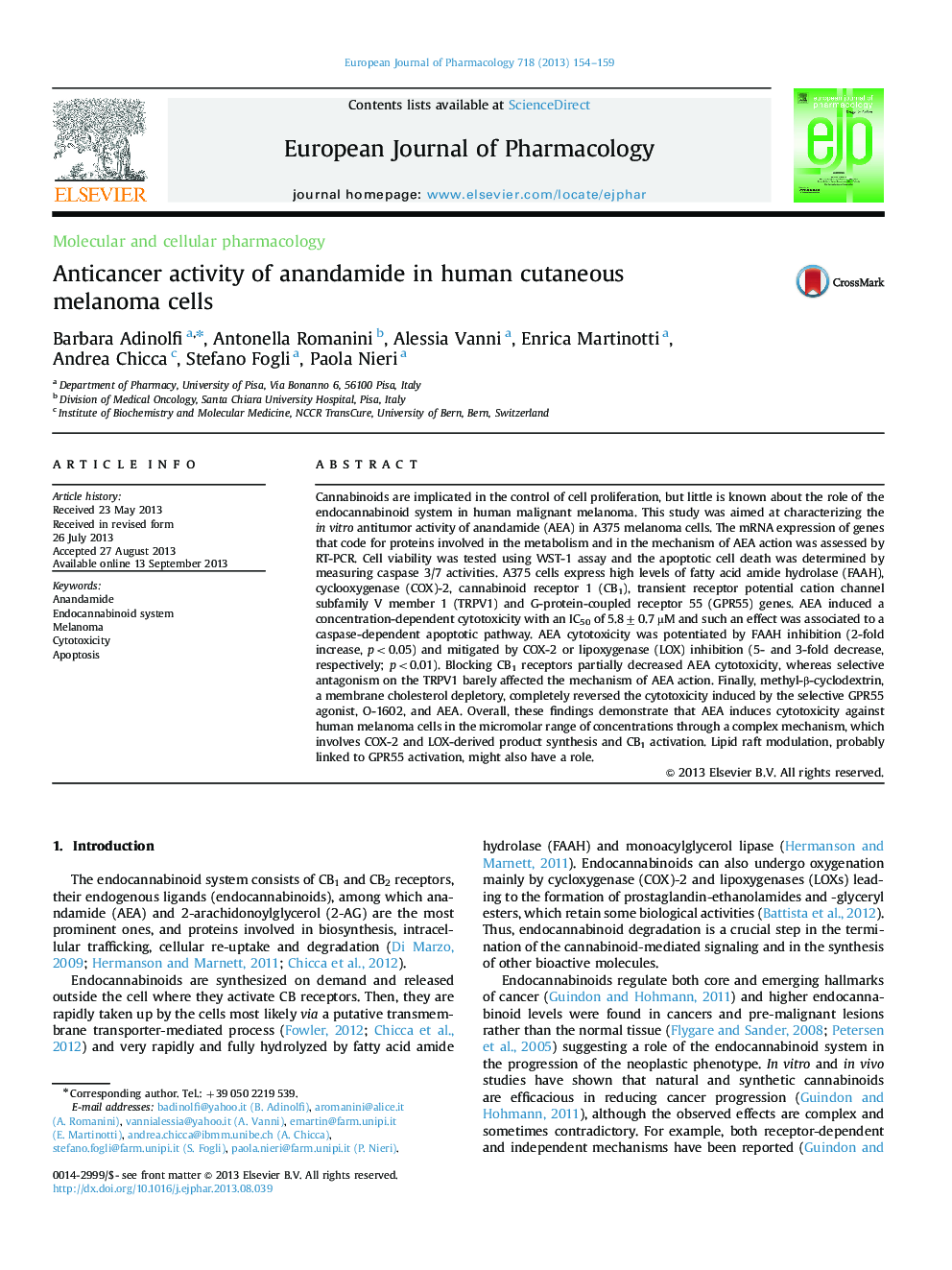| Article ID | Journal | Published Year | Pages | File Type |
|---|---|---|---|---|
| 5828349 | European Journal of Pharmacology | 2013 | 6 Pages |
Cannabinoids are implicated in the control of cell proliferation, but little is known about the role of the endocannabinoid system in human malignant melanoma. This study was aimed at characterizing the in vitro antitumor activity of anandamide (AEA) in A375 melanoma cells. The mRNA expression of genes that code for proteins involved in the metabolism and in the mechanism of AEA action was assessed by RT-PCR. Cell viability was tested using WST-1 assay and the apoptotic cell death was determined by measuring caspase 3/7 activities. A375 cells express high levels of fatty acid amide hydrolase (FAAH), cyclooxygenase (COX)-2, cannabinoid receptor 1 (CB1), transient receptor potential cation channel subfamily V member 1 (TRPV1) and G-protein-coupled receptor 55 (GPR55) genes. AEA induced a concentration-dependent cytotoxicity with an IC50 of 5.8±0.7 µM and such an effect was associated to a caspase-dependent apoptotic pathway. AEA cytotoxicity was potentiated by FAAH inhibition (2-fold increase, p<0.05) and mitigated by COX-2 or lipoxygenase (LOX) inhibition (5- and 3-fold decrease, respectively; p<0.01). Blocking CB1 receptors partially decreased AEA cytotoxicity, whereas selective antagonism on the TRPV1 barely affected the mechanism of AEA action. Finally, methyl-β-cyclodextrin, a membrane cholesterol depletory, completely reversed the cytotoxicity induced by the selective GPR55 agonist, O-1602, and AEA. Overall, these findings demonstrate that AEA induces cytotoxicity against human melanoma cells in the micromolar range of concentrations through a complex mechanism, which involves COX-2 and LOX-derived product synthesis and CB1 activation. Lipid raft modulation, probably linked to GPR55 activation, might also have a role.
